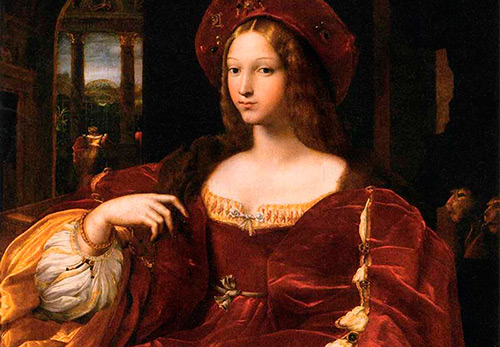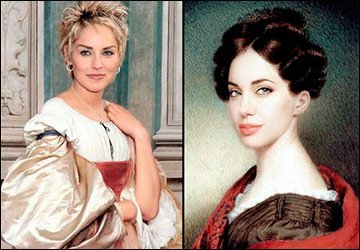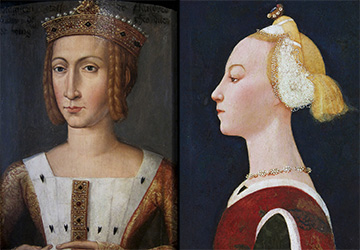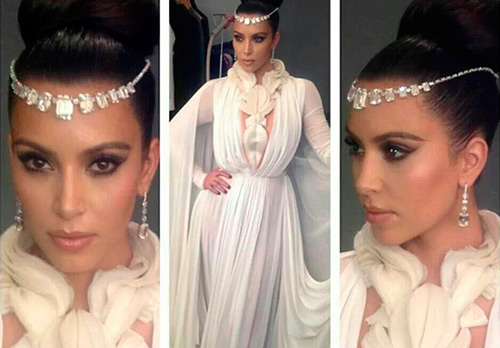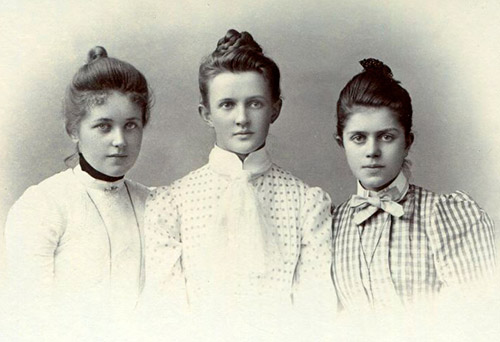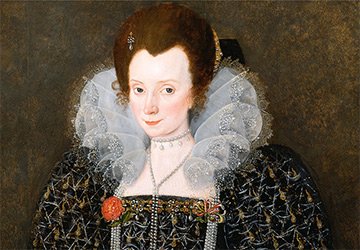Fashion history
Renaissance Venetian and Florentine hairstyles
Man is the measure of all things
Renaissance or Renaissance invariably associated with three great artists - Leonardo da Vinci, Michelangelo and Raphael.
Leonardo da Vinci is more than an artist. However, this is the ideal of the Renaissance - to be everything, to know a lot, to be remembered beautiful. Leonardo da Vinci was both an artist and a sculptor and an inventor - the first tank, airplane, parachute - all this is preserved in his drawings.
Michelangelo is an artist, architect, sculptor. His sculptures are impressive. In the case of Raphael (artist, architect, sculptor), his paintings are impressive, and especially the Madonna, of which he painted more than 300 in his short life.
In addition to Leonardo da Vinci, Michelangelo and Raphael, the Renaissance gave mankind other equally talented sculptors, painters and architects - Sandro Botticelli, Bramante, Donatello, Titian.
In the Renaissance, a man and his body returned to the center of the world, as in the period of Antiquity. One could forget about the soul. Renaissance artists turned to ancient examples both in painting and sculpture, and in architecture, forgetting about the Middle Ages. But surprisingly, the Vatican became one of the main customers of their work.
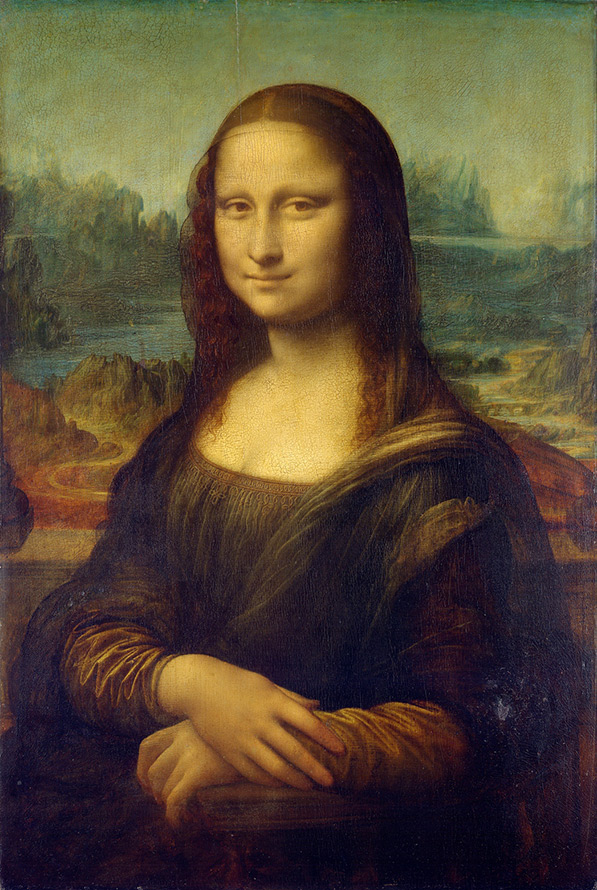
Leonardo da Vinci. Mona Lisa. Louvre, Paris
In Italy, the centers for the development of Renaissance art were three cities - Florence (the main customer of works of art of the Medici family), Rome (Vatican) and Venice.
The same goes for fashion. The fashion in clothes and hairstyles in the 15th century was set by Florence, from the end of the 15th - in the 16th centuries - by Venice.
Florence Hairstyles
The men's hairstyles of the inhabitants of Florence, both poor and rich, were very similar in their silhouette. These were mainly ball-shaped hairstyles. Hairstyles were made most often from long curled hair.
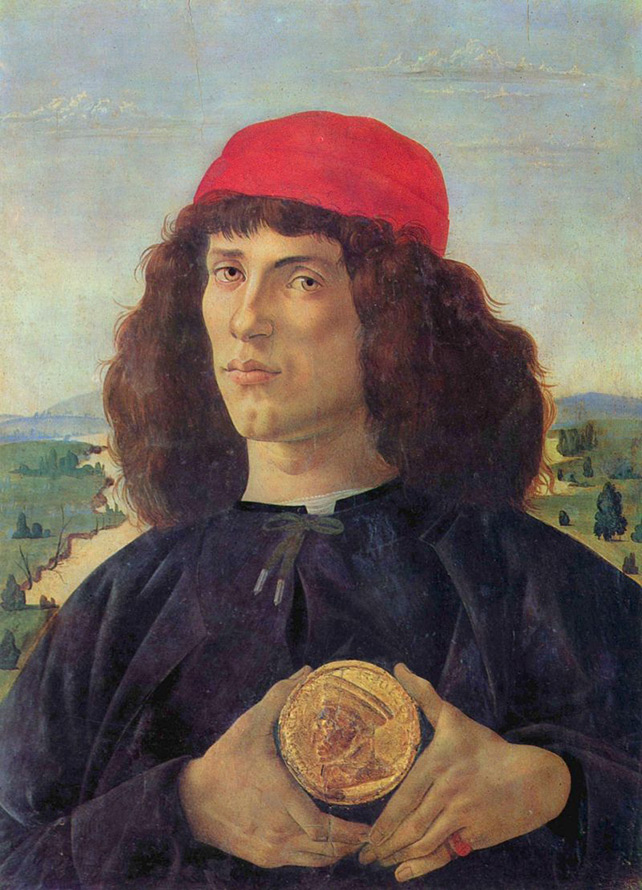
Sandro Botticelli. Portrait of an Unknown Man with the Cosimo Medici Medal. (1474-1475)
Here the hairstyle is elliptical - "flask" and a typical headdress of Italy during the Renaissance
Young people wore curled, fluffy and loose hair. Either with a small bang or without it. The hair was combed back or had a straight part.
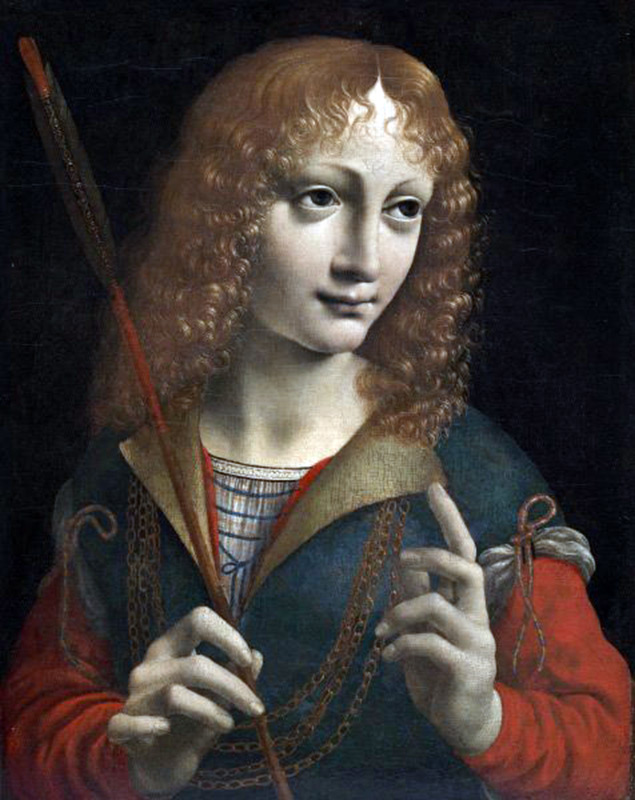
Giovanni Ambrogio de Predis (student of Leonardo da Vinci). Saint Sebastian.
Young man's hairstyle.
Another option for the hairstyle was a hairstyle of curled hair, laid in a wide roller with the ends inward.
They also wore shorter ellipse-shaped hairstyles, a “ladder” haircut, a “peisan” haircut, which was popular in the Middle Ages.
Only older men wore beards. The youth walked with shaved faces.
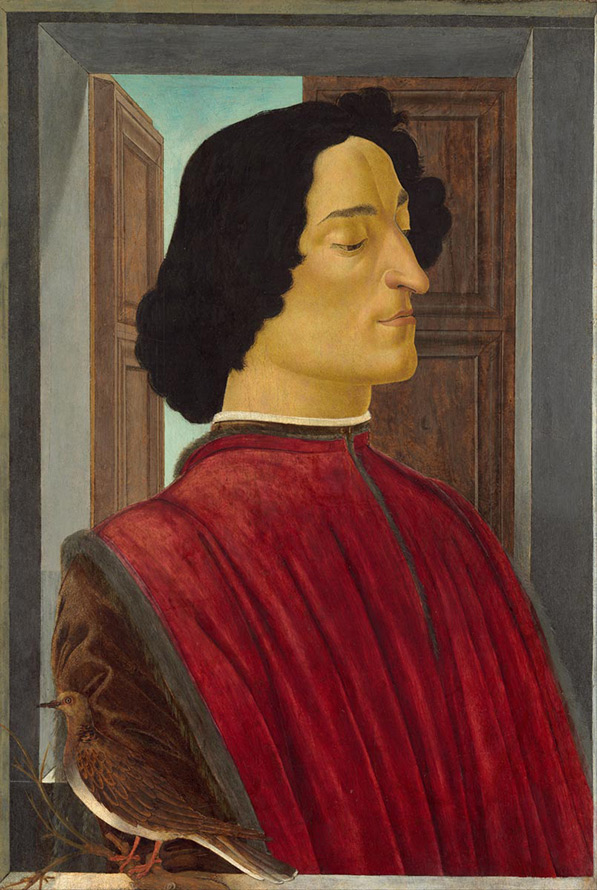
Sandro Botticelli. Portrait of Giuliano Medici (1478-1482).
Elliptical hairstyle.
The women's hairstyles in Florence were complex, consisting of braids and perms. They were richly decorated with ribbons and pearls. Unlike the Middle Ages, women could now walk bareheaded.
So, for example, they wore hairstyles like the "Greek" knot. Girls could walk with loose curled hair. Women wore hairstyles made from braids, which were arranged in spirals over the ears. Veils, hair nets, small velvet hats could be worn with such braids.

Sandro Botticelli. Portrait of a young woman, 1476-80.
"Florentine Spit".
But one of the most popular hairstyles was the "Florentine braid" hairstyle. This hairstyle existed in several versions. The hair was parted in a straight part, combed in semicircles on the cheeks, a braid was braided at the back of the head. The braid was tied up with cords, ribbons and beads. They could put such a braid in a special leather case or a net. Another version of this hairstyle - instead of a braid, the hair on the back of the head was gathered in a bun and flowed down the back in a slightly wavy strand.
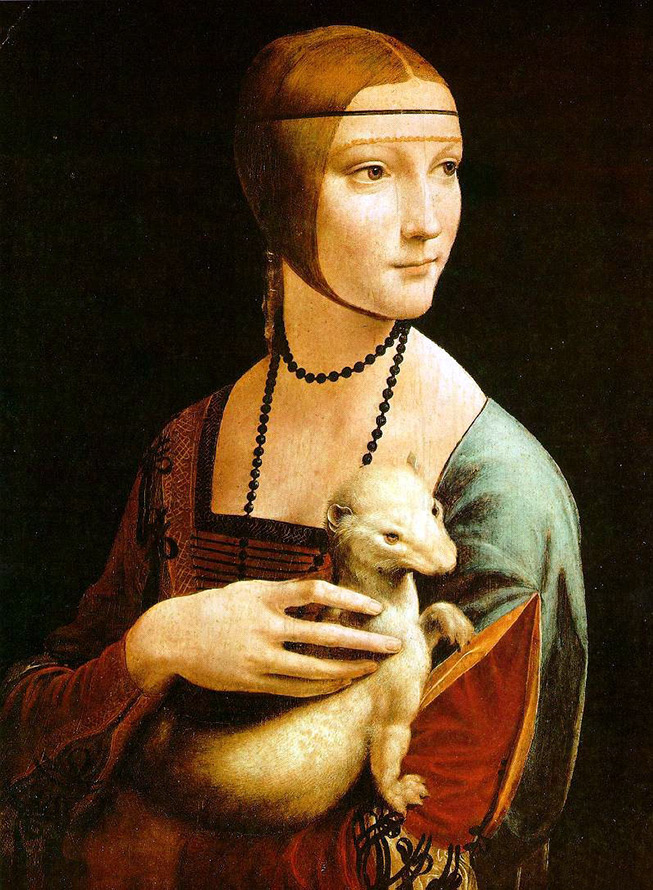
Leonardo da Vinci. Lady with an Ermine, 1490.
"Florentine Spit".
Venice hairstyles
In Venice, hairstyles and hats, as well as the outfits of local residents, will be influenced not only by Western fashion, but also by the fashion of the East. After all Venice - seaport. So, for example, the Venetians will start wearing oriental turbans as a headdress.
Venice men's hairstyles were in many ways similar to the Florentine hairstyles.
The ellipse-shaped haircut was popular - this hairstyle was called "flask".
Since the 16th century, high collars have come into fashion, which will appear and will be popular at the Spanish court. Under the influence of fashion on such collars (collar-cutter - tight, on a frame, framing the neck, starched, made of lace) men's hairstyles will become shorter and shorter. The fashion for short haircuts will come to Venice.
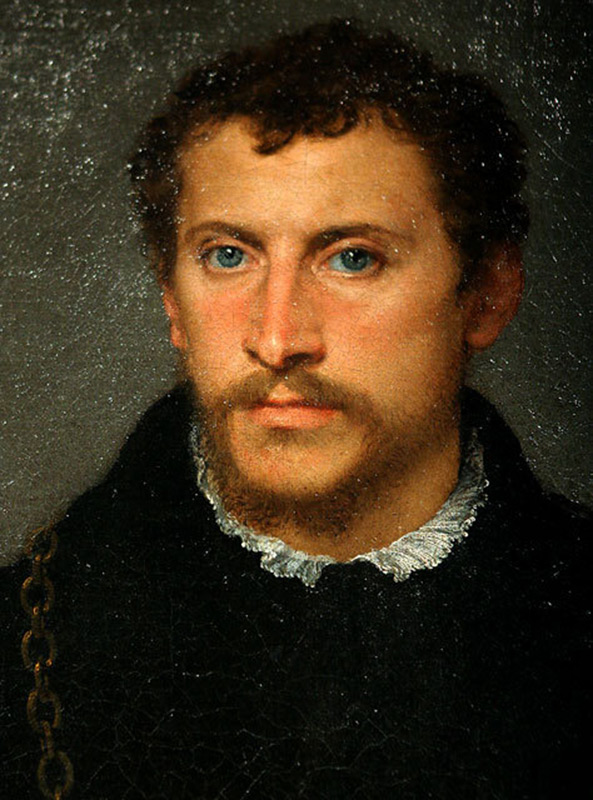
Titian. Portrait of an unknown man with gray eyes.
Short haircut.
Men in both Venice and Florence most often wore small hats shaped like berets.
Women's hairstyles in Venice were divided into two main types:
• hairstyles with curled curls, pinned hairpins and embellishments;
• hairstyles from braids, styled in a variety of ways.
The Venetians also wore hairstyles like "flasks". Such hairstyles consisted of hair gathered in a net that descended from the crown of the head.
There was a hairstyle of the "turban" type - bunches of hair gathered from bundles of hair were laid on the crown of the head.
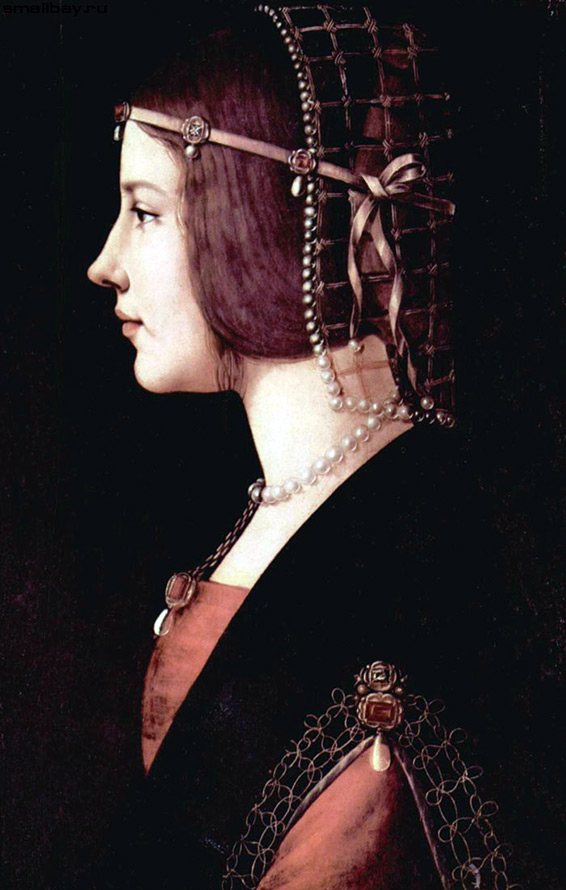
Giovanni Ambrogio de Predis (student of Leonardo da Vinci). Portrait of a Lady.
Bulb hairstyle with mesh.
There was also a courtesan hairstyle, which decent ladies (mothers and wives) could not afford to wear - the hairstyle consisted of two thick plaits that were laid over the forehead in the form of donuts, plus an attribute of such a hairstyle was the obligatory presence of thick bangs with small curls. The hair from the back of the head was brushed smoothly.
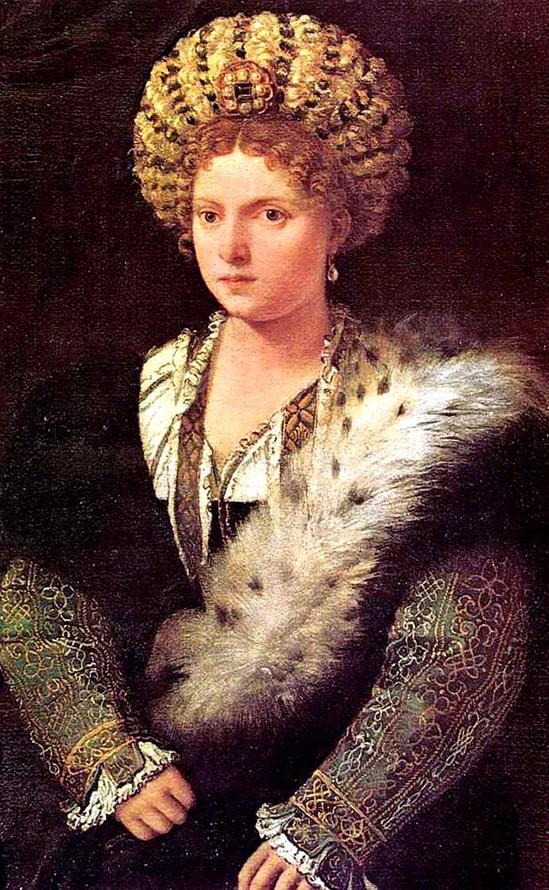
Titian. Isabella d'Este, 1535.
Headpiece in the form of a turban.
Both the residents of Florence and the residents of Venice at that time considered a high, clean forehead beautiful. Eyebrows and even eyelashes, as in the Middle Ages, were completely plucked out, shaved and the hair over the forehead. Gold hair color was in fashion - golden-haired Greek goddesses, who were remembered again with the advent of interest in Antiquity. Hair was lightened with various herbal extracts. Or the sun. Among women, straw hats with wide brims, but without a bottom, were popular. Thus, the hair was exposed to the sun. And on the roofs of houses, special wooden booths could even be erected, in which ladies, sitting in the sun, lightened their hair. Truth Tan in those days it was not at all in vogue.
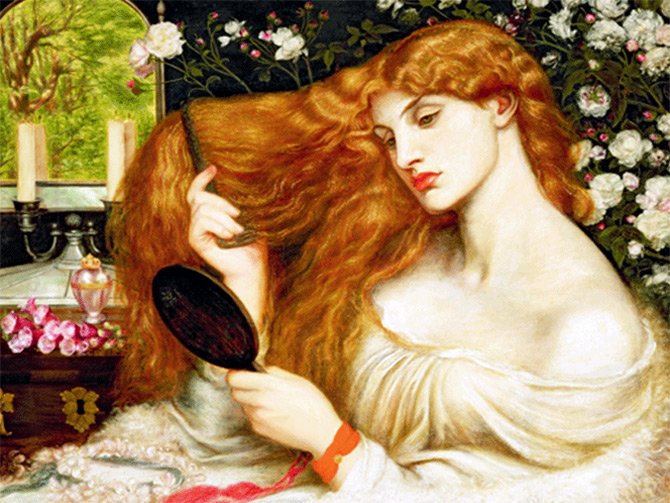
Veronica D.
Comments and Reviews
Add a comment
Rating news
Shades of clothing that make women look younger
What shades of hair make women younger: rules and photos
Funny wedding dresses - photos and ideas
12 most expensive down jackets for the winter
How to look 25 at 40: tips from supermodels
Beautiful schoolgirls
Anti-aging haircuts and hairstyles for women
Fashionable skirts for autumn and winter
Fashionable women's trousers for the cold season
Fashionable and stylish sandals for summer 2024
Spring-summer 2024
 Fashionable dresses and tops with thin spaghetti straps
Fashionable dresses and tops with thin spaghetti straps
 Bandana tops: how to wear stylishly and beautifully
Bandana tops: how to wear stylishly and beautifully
 How to put together the perfect men's wardrobe for the summer
How to put together the perfect men's wardrobe for the summer
 Fashionable shorts for spring-summer 2024
Fashionable shorts for spring-summer 2024
 Fashionable skirts for spring-summer 2024: a guide to online shopping
Fashionable skirts for spring-summer 2024: a guide to online shopping
 The most fashionable dresses spring-summer 2024: styles and colors
The most fashionable dresses spring-summer 2024: styles and colors
 Fashionable total look 2024: ideas of images and trends
Fashionable total look 2024: ideas of images and trends
